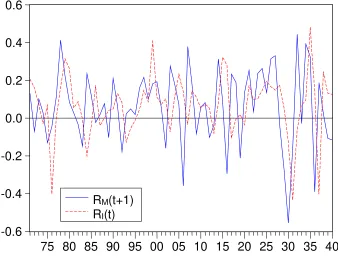The long run behavior of the S&P Composite Price Index and its risk premium
Full text
Figure




Related documents
Click the Store Reference Spectrum ( ) icon on the toolbar or by select File | Store | Store Reference Spectrum from the menu bar to store the reference.. This command merely
Results of the survey are categorized into the following four areas: primary method used to conduct student evaluations, Internet collection of student evaluation data,
© 2011 EMI APRIL MUSIC INC., B-DAY PUBLISHING, CAINON’S LAND MUSIC PUBLISHING, TOTALLY FAMOUS MUSIC, UNIVERSAL MUSIC CORP., BIV TEN PUBLISHING, PEERMUSIC III, LTD., DAT DAMN DEAN
Areas of recent focus include definitional difficulties, the importance of digital citizenship, the role of empathy, encouraging bystanders to become active participants,
Kendra houses calculated from the Moon in this example, are the fifth (first house calculated from the Moon), eighth (fourth house calculated from the Moon), eleventh (seventh
If such cash flows are denominated in a foreign currency or sensitive to changes in commodity prices or interest rates, then the value or magnitude of such expected cash flows
We also found mixed results regarding the effects of the west-east wind component (u-wind) and the turbulence kinetic energy (tke). We found a neg- ative effect of the u-wind
A prospective experimental design was used to compare post-PRK residual refractive errors and pre-PRK corrected visual performance to post-PRK performance, both corrected and


![Figure 13 – Comparison of the inverted dividend yield, 1/Deffect, and after 1950, the dividend yield followed a behaviour [see Equation 28] consistent withdata](https://thumb-us.123doks.com/thumbv2/123dok_us/8112374.791435/21.595.175.430.435.699/comparison-inverted-dividend-deffect-dividend-behaviour-equation-consistent.webp)